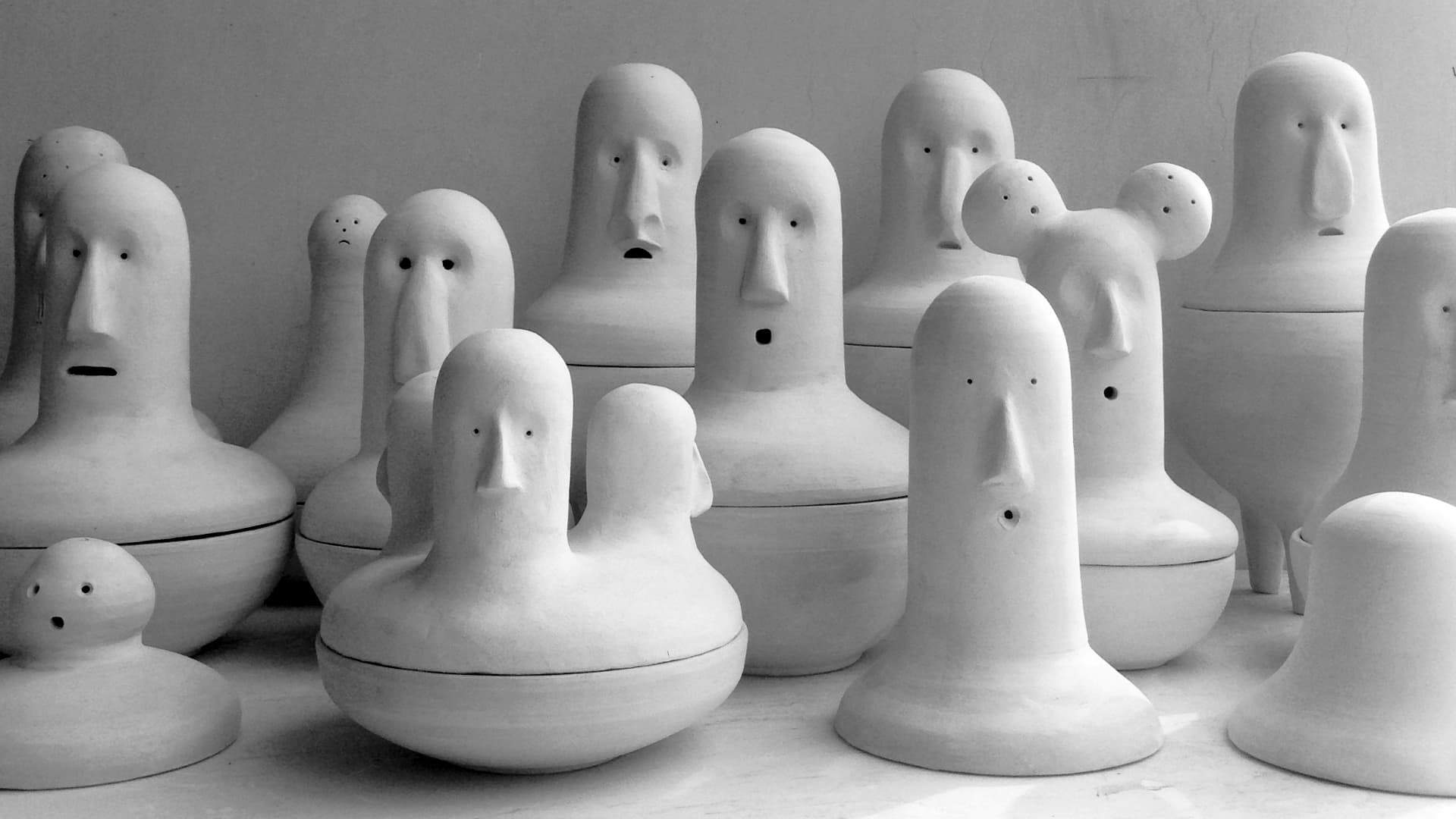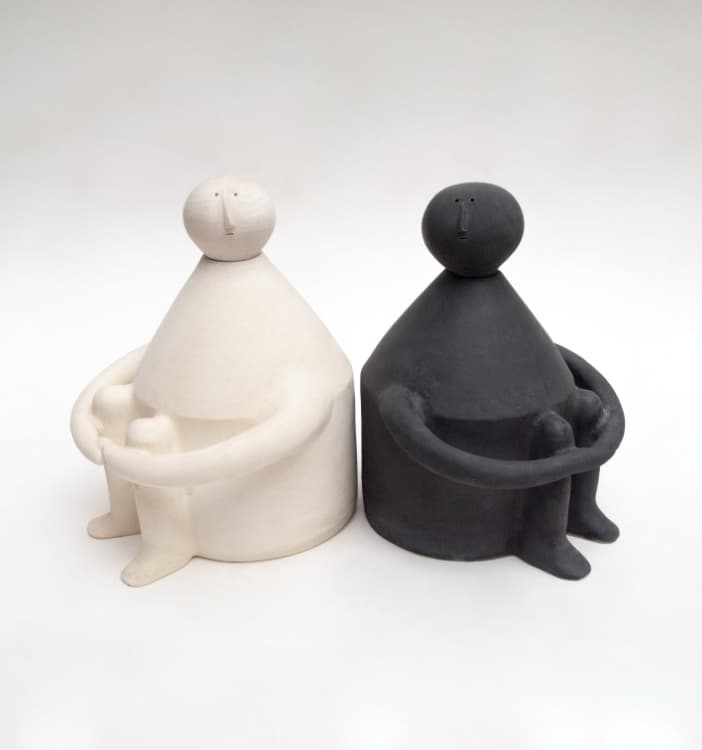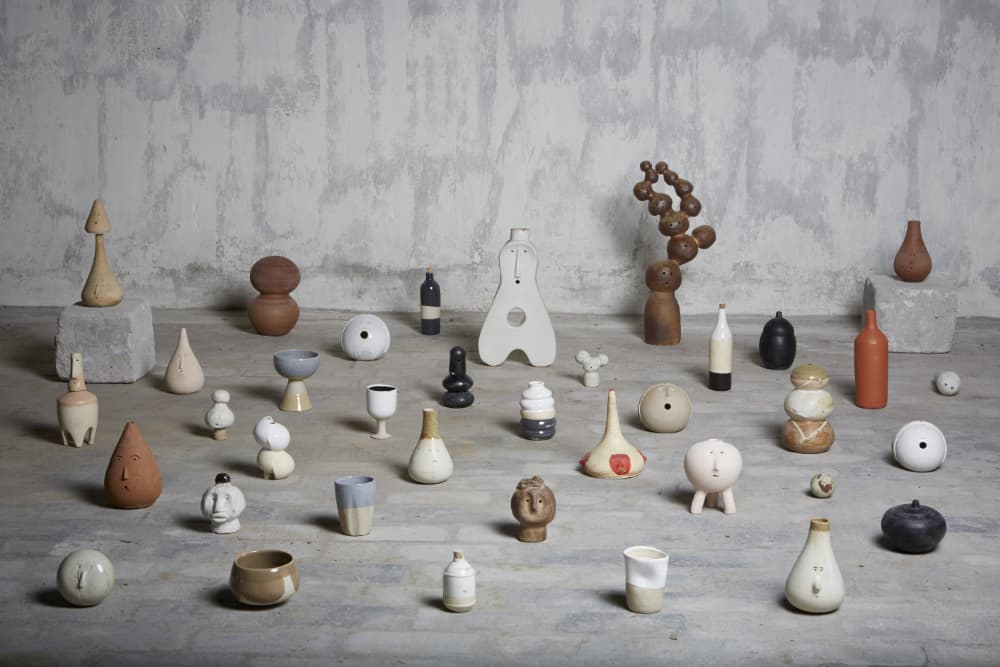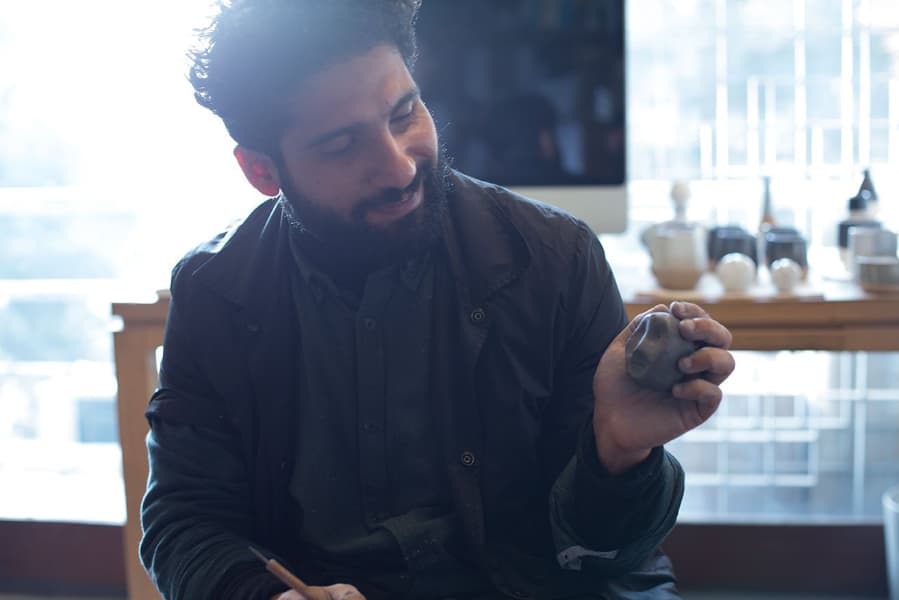
Aman Khanna: Embracing Imperfection
Aman Khanna has turned his interest in clay into a full-time studio and gallery. With his team, he produces sculptures and objects that have been exhibited at the London Design Fair in Istanbul, New York, Hong Kong and throughout India.
Pictoplasma: You studied graphic and information design in London almost 20 years ago and then set up your graphic design studios in London and New Delhi. A few years ago, you changed direction and started working with clay. Can you talk about how that shift took place?
Aman Khanna: In 2013, after working for more than a decade with digital media, I’d had enough of my world being confined to the screen and I wanted some tactility. I joined the Pictoplasma Academy in that year, which gave me the push I needed, and right after that I took another course to learn how to work with clay; this being the most ancient medium used by people to create everyday objects. I quickly turned off my mobile phone, I stopped taking calls from my clients, I was literally just immersed in clay and spent a couple of months working with it, learning how to hand-mould it. There has been no stopping ever since.
I started to create small clay sculptures that were inspired by my surroundings and the people living in them. These became the Claymen. They are divided into two broad categories; functional and dysfunctional. The functional pieces do not have faces, but the dysfunctional are mostly characters and depict different feelings and emotions. They are all based on human behaviour.

Working with clay means that all your pieces are individual, and you embrace the idea that there’s beauty in little imperfections. Is this intrinsic to your progression from digital to analogue?
I think so. Once I got familiar with the material of clay, I realised that the more natural it remained, the better it looked. At least, to my mind. I had seen a lot of really clean, polished sculptures but I just wanted the form and finish to come out of the material itself, so I left it bare. A lot of the pieces I make are completely unglazed, and each piece retains its individuality.
Can you tell us more about this distinction between the functional and dysfunctional pieces?
The idea for the dysfunctional pieces was that things obviously don’t run smoothly all the time and there are issues and discrepancies. They are inspired by observations about myself and other people and how they are interacting; what they are saying and what they are not saying. These objects were statements on what was going on. For instance, this one work, Self-Reflection (2017), is about trying to understand how I am responding to certain things. When people walk into the studio and see this work, they instantly have a connection to it because at some point they are also faced with a similar internal conversation. A lot of my pieces are like that, evoking conversations, and that is what makes people relate to them.

Would you say that this dysfunctionality is also a comment on society?
The moment you make something, it acquires a space. I was working digitally before, so everything stayed in files and folders. The moment I started sculpting, this changed and I keep asking myself; why am I even making something? For me, the answer is that it’s all about making a statement, trying to say something psychological that people can relate to, understand about themselves or their interactions with other people. This resonates. People come into the studio to buy a functional piece, but they end up buying a dysfunctional sculpture.

Interview by Pictoplasma published in Pictoplasma Magazin – Issue 1: Face Value, 2021
- 296 views
- 0x empathy